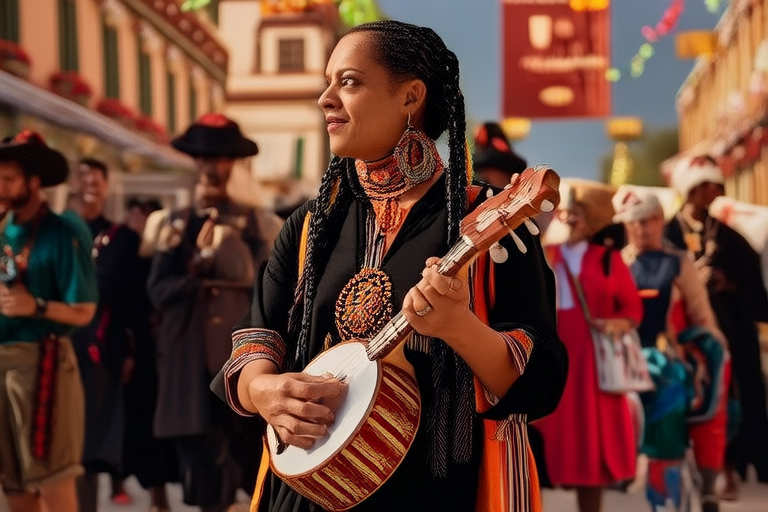The Intricacies of Cultural Customs: A Journey Around the World

The Intricacies of Cultural Customs: A Journey Around the World
Introduction
Cultural customs are the threads that weave together the fabric of human society. They shape our behaviors, beliefs, and interactions, serving as a window into the heart of a community’s identity. Understanding these customs is crucial for travelers, as it can enhance their experience by fostering deeper connections and mutual respect. Whether through bowing in Japan or sharing meals in Italy, cultural customs provide insights into the values and traditions that define a place.
Traveling with an appreciation for local customs allows individuals to engage more meaningfully with the people and places they visit. This understanding not only enriches personal experiences but also promotes cross-cultural dialogue and empathy, contributing to a more harmonious global community.
Asia
Asia, a continent brimming with diversity, offers a fascinating array of cultural customs. In Japan, bowing is a common form of greeting, expressing respect and humility. The depth of the bow depends on the relationship between individuals and the level of respect being conveyed. In contrast, China places great emphasis on gift-giving, where presents are often wrapped in red paper, symbolizing good fortune. It is customary to refuse gifts multiple times before accepting them, showcasing modesty.
In India, respect is paramount, especially towards elders and religious figures. The practice of touching feet as a sign of respect is widespread, particularly during auspicious occasions. Temple visits hold significant importance in Thailand, where visitors must dress modestly and remove their shoes before entering. These practices reflect the deep-rooted spirituality and reverence for sacred spaces.
Europe
Europe, with its rich history and varied cultures, showcases a multitude of customs. In Italy, family values are central, and hospitality is a cornerstone of social life. Hosting guests at home is seen as an honor, and meals are often lengthy affairs filled with conversation and laughter. The siesta in Spain reflects the Mediterranean lifestyle, allowing time for rest during the hottest part of the day.
France, known for its culinary expertise, has strict dining etiquette. For instance, bread is never placed upside down on the table, and it is considered polite to wait for everyone to start eating before beginning oneself. Greece celebrates numerous festivals throughout the year, many of which have religious origins. These events bring communities together, fostering unity and tradition.
Africa
Africa, a continent marked by vibrant traditions and ancient practices, offers a wealth of cultural customs. In Morocco, hospitality is a cherished virtue, and guests are welcomed with open arms. Traditional tea ceremonies are common, symbolizing warmth and friendship. Egypt, with its long history, places great importance on spiritual practices, including elaborate funerals and mummification rituals.
Kenya’s Maasai people follow a communal lifestyle, where cooperation and shared responsibilities are essential. Their cattle are highly valued, representing wealth and status. South Africa, a melting pot of cultures, has a complex history that has shaped its customs. The country’s traditions reflect resilience and adaptation, with many communities blending indigenous practices with colonial influences.
The Americas
The Americas, encompassing North and South America, are home to a diverse range of cultural customs influenced by indigenous, European, and African heritage. In the United States, family gatherings are a significant aspect of social life, particularly during holidays like Thanksgiving. These events emphasize togetherness and gratitude.
Mexico’s Dia de los Muertos, a celebration of deceased loved ones, combines indigenous and Catholic traditions. Altars are built, adorned with offerings and photographs of the departed. In Brazil, Carnival is a colorful and exuberant festival, featuring parades, music, and dance. This event highlights the country’s passion for art and creativity. Peru’s indigenous heritage is evident in its traditional festivals, such as Inti Raymi, a celebration of the sun god.
Oceania
Oceania, comprising Australia, New Zealand, and Polynesia, has unique cultural customs deeply rooted in land and community. In Australia, Aboriginal culture emphasizes the connection to the land, with stories passed down through generations. Dreamtime narratives explain the creation of the world and the origins of life.
New Zealand’s Maori people value storytelling as a means of preserving history and passing down knowledge. Haka, a traditional war dance, is performed at significant events, symbolizing strength and unity. In Polynesia, community plays a vital role, with extended families often living together. Festivals and gatherings celebrate shared heritage and reinforce bonds.
Conclusion
Exploring the intricacies of cultural customs around the world reveals the richness and diversity of human experience. From bowing in Japan to Carnival in Brazil, each custom offers a glimpse into the values, traditions, and beliefs that shape a society. By approaching new destinations with curiosity and respect, travelers can deepen their understanding and appreciation of different cultures.
Respecting and understanding cultural customs not only enhances individual travel experiences but also fosters a more inclusive and empathetic global community. Let us continue to embrace the beauty of diversity and strive for greater cross-cultural understanding.